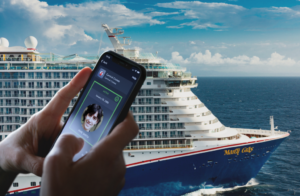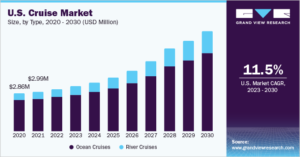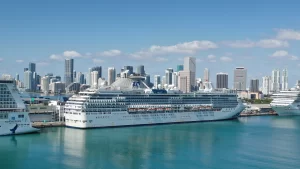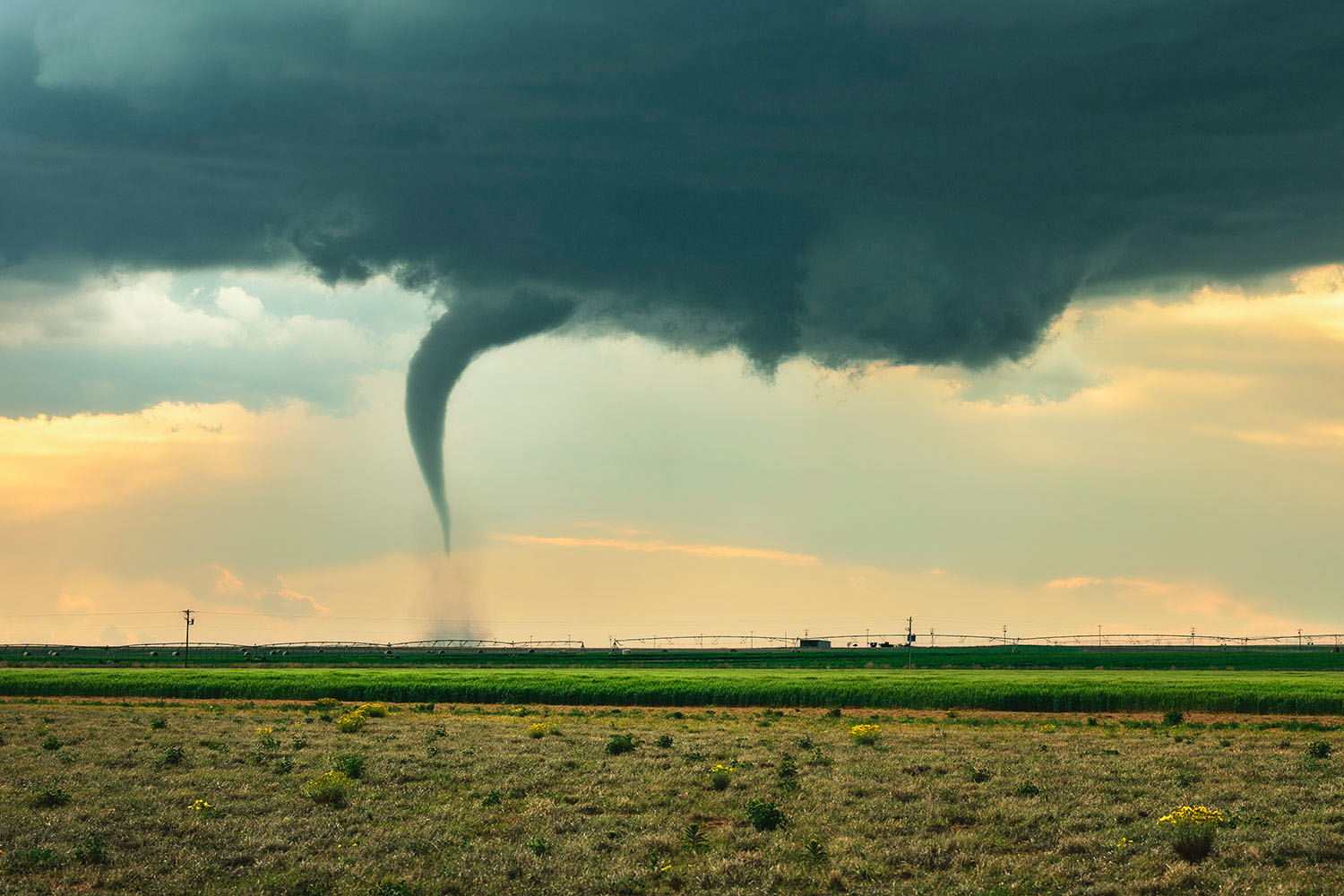The Growth of the Cruise Industry Post-COVID: A Resilient Rebound
The COVID-19 pandemic hit the cruise industry harder than perhaps any other sector. Ships, once bustling with tourists, were docked indefinitely, and the future of cruising looked uncertain. However, as the world gradually reopened, the cruise industry has not only rebounded but is experiencing a significant resurgence. This post explores how the cruise industry has grown post-COVID, the factors driving its recovery, and what the future might hold for this resilient sector.

The Immediate Impact of COVID-19
When the pandemic first struck, the cruise industry was one of the earliest and hardest hit. Ships became infamous for being floating hotspots of the virus, leading to widespread negative media coverage and public fear. Cruise lines were forced to suspend operations, resulting in billions of dollars in losses, layoffs, and even the scrapping of some older ships.
The recovery process began slowly as cruise lines implemented stringent health and safety measures, including enhanced cleaning protocols, reduced capacity, and mandatory testing and vaccination requirements. These measures were essential to rebuild trust among travelers and regulatory bodies.

The Rebound Begins
As global vaccination rates increased and travel restrictions eased, the cruise industry began to chart a course toward recovery. By mid-2021, many cruise lines had resumed operations, albeit with limited capacity and enhanced safety protocols. The demand for cruising began to pick up as travelers, eager to return to some semblance of normalcy, booked trips in increasing numbers.
One of the key drivers of the rebound was the industry’s ability to adapt. Cruise lines quickly pivoted to offer more flexible booking policies, including easier cancellations and rescheduling options, to reassure wary travelers. Additionally, the industry invested heavily in marketing campaigns highlighting the enhanced safety measures and the unique value of cruising—such as the ability to visit multiple destinations while only unpacking once.

The Role of Technology and Innovation
Technology played a significant role in the cruise industry’s recovery. The adoption of touchless technology, such as contactless check-ins and payments, became standard, reducing physical interactions and enhancing the overall safety of the cruising experience. Moreover, cruise lines invested in upgrading their ventilation systems to improve air quality onboard, a crucial factor in preventing the spread of airborne illnesses.
The industry also embraced digital innovation in customer engagement. Virtual tours, live-streamed events, and interactive apps helped keep potential customers engaged even when they couldn’t travel. These efforts paid off as cruise bookings surged once restrictions were lifted.

A Surge in Demand: The Post-Pandemic Boom
By 2022, the cruise industry was experiencing a surge in demand, with some cruise lines reporting record bookings. This surge can be attributed to several factors:
-
Pent-Up Demand: After months, or even years, of lockdowns and travel restrictions, people were eager to travel again. Cruising, with its all-inclusive nature and ability to visit multiple destinations, appealed to many as a convenient and safe option.
-
Changing Demographics: The pandemic saw a shift in cruise demographics. Younger travelers and families, who may not have considered cruising before, started exploring this option as a safe and enjoyable way to vacation. This shift has broadened the market for cruise lines and contributed to the industry’s growth.
-
Destination Diversification: Cruise lines began offering more diverse and unique itineraries, including trips to less crowded and more exotic destinations. This diversification attracted a broader range of travelers and helped cruise lines stand out in a competitive travel market.
-
Sustainability Initiatives: The cruise industry also responded to growing environmental concerns by investing in more sustainable practices. Newer ships are being designed with advanced technologies to reduce emissions and minimize their environmental impact, which appeals to environmentally-conscious travelers.
Looking Ahead: The Future of Cruising
The cruise industry’s recovery post-COVID is a testament to its resilience and adaptability. As we look ahead, several trends are likely to shape the future of cruising:
-
Continued Focus on Health and Safety: Enhanced health and safety protocols will remain a cornerstone of the cruising experience. Cruise lines will continue to invest in technology and practices that ensure the safety of passengers and crew.
-
Growth of Smaller, Luxury Cruises: There is a growing trend towards smaller, more intimate cruise experiences. These luxury cruises offer personalized service, unique itineraries, and a higher level of exclusivity, appealing to a niche but lucrative market.
-
Sustainability: The push towards sustainability will continue, with cruise lines adopting greener technologies and practices. This will not only help protect the environment but also appeal to a new generation of eco-conscious travelers.
-
Expanding Markets: Emerging markets, particularly in Asia and Latin America, present significant growth opportunities for the cruise industry. As economies in these regions grow, so too will the demand for cruising.
The cruise industry’s post-COVID growth story is one of resilience, adaptability, and innovation. While the pandemic posed unprecedented challenges, the industry’s ability to pivot, innovate, and meet changing consumer demands has positioned it for a robust recovery. As cruising continues to evolve, it will likely emerge stronger and more diverse, offering travelers even more reasons to set sail. Whether it’s exploring new destinations, enjoying luxury experiences, or simply getting back to the joy of travel, the future of cruising looks bright. This period of growth is not just a return to the pre-pandemic status quo but a transformation that promises to redefine the cruising experience for years to come.






